Understanding the Northern Lights and Solar Maximum 2024
The aurora borealis, or Northern Lights, is a breathtaking celestial display caused by charged particles from the sun interacting with Earth’s atmosphere. These interactions are most intense during periods of high solar activity, known as solar maximums. 2024 coincides with a solar maximum, promising increased frequency and intensity of auroral displays. This heightened solar activity makes 2024 an exceptional year to witness the magic of the Northern Lights. As the sun releases more energy, the chances of experiencing vibrant and dynamic auroras increase significantly, making it a prime time for aurora chasers to be captivated by this natural wonder.
Top Locations for Northern Lights Viewing in 2024
The year 2024, with its heightened solar activity, presents an unparalleled opportunity to witness the captivating spectacle of the Northern Lights. Choosing the right location is paramount for maximizing your chances of experiencing this natural wonder. Fortunately, several destinations renowned for their auroral displays beckon travelers seeking an unforgettable encounter with the celestial dance of lights.
Fairbanks, Alaska
Nestled deep within Alaska’s interior, Fairbanks enjoys an enviable location within the auroral oval, a geographical region with high auroral activity. This prime positioning, coupled with minimal light pollution, makes Fairbanks an exceptional choice for aurora viewing. From late August to early April, the city experiences long, dark nights, creating ideal conditions for witnessing the mesmerizing display of the Northern Lights. Fairbanks also offers a plethora of winter activities, allowing visitors to combine aurora viewing with other memorable experiences.
Yellowknife, Canada
Situated in Canada’s Northwest Territories, Yellowknife is another top contender for witnessing the Northern Lights. Renowned as the “Aurora Capital of the World,” Yellowknife boasts an impressive average of 240 aurora nights per year. Its remote location, far from urban light pollution, provides exceptionally dark skies, enhancing the visibility and vibrancy of the auroral displays. The city offers various tour operators specializing in aurora viewing, ensuring visitors have the best possible chance to witness this celestial spectacle. Moreover, Yellowknife’s rich Indigenous culture and captivating winter landscapes add to the allure of this auroral hotspot.
Tromsø, Norway
Tromsø, a vibrant city nestled within the Arctic Circle in Norway, offers a unique blend of urban amenities and stunning natural beauty, making it an ideal destination for aurora chasers. Known as the “Gateway to the Arctic,” Tromsø is strategically positioned within the auroral oval, guaranteeing frequent and spectacular auroral displays. From late September to late March, the city experiences prolonged periods of darkness, providing ample opportunities to witness the mesmerizing dance of lights. Tromsø also boasts a variety of aurora viewing options, from cozy cabins nestled in the wilderness to organized tours led by experienced guides. The city’s charming waterfront, colorful wooden houses, and rich cultural heritage further enhance the overall experience.
Reykjavik, Iceland
Iceland’s capital, Reykjavik, offers a unique advantage for aurora chasers: accessibility. Despite being a bustling city, Reykjavik’s relatively small size and strategic location within the auroral zone make it possible to witness the Northern Lights even within the city limits. However, venturing slightly outside the city center to escape light pollution is recommended for optimal viewing conditions. Reykjavik also serves as an excellent base for exploring Iceland’s otherworldly landscapes, including glaciers, volcanoes, and geothermal pools, making it an ideal destination for a multifaceted Arctic adventure.
Lapland, Finland
Lapland, the northernmost region of Finland, offers a truly magical setting for witnessing the Northern Lights. Covered in vast expanses of pristine wilderness, Lapland provides an escape from urban light pollution, creating ideal conditions for aurora viewing. The region’s long, dark winter nights, stretching from September to April, offer ample opportunities to witness the celestial spectacle. Lapland also offers a range of unique aurora viewing experiences, from glass-roofed igloos to reindeer-drawn sleigh rides, allowing visitors to immerse themselves in the Arctic wilderness while marveling at the Northern Lights.
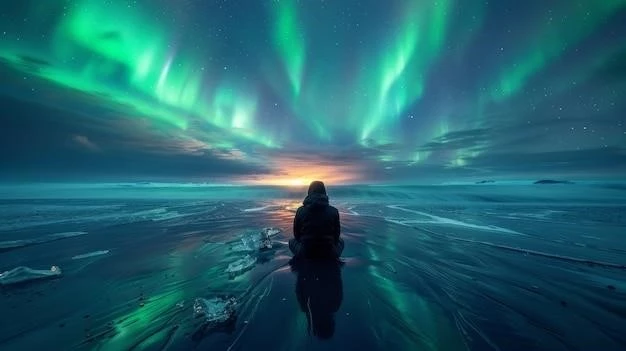
Fairbanks, Alaska
Fairbanks, Alaska, is widely regarded as one of the premier destinations worldwide for witnessing the awe-inspiring beauty of the Northern Lights, or Aurora Borealis. Its strategic location within the auroral oval, a band of high auroral activity encircling the Earth’s geomagnetic poles, combined with favorable weather conditions and minimal light pollution, makes it an aurora chaser’s paradise.
Fairbanks’ position within the auroral oval ensures a high probability of witnessing the celestial display on any given night during the aurora season, which typically extends from late August to early April. During this time, the city experiences long hours of darkness, creating an ideal canvas for the auroral lights to paint the night sky with their vibrant hues. Fairbanks’ commitment to preserving dark skies further enhances the viewing experience, allowing the aurora’s ethereal glow to shine brightly without the interference of urban light pollution.
Beyond its prime location and dark skies, Fairbanks offers a range of amenities and activities that cater specifically to aurora enthusiasts. Numerous hotels, lodges, and resorts located outside the city center provide unobstructed views of the night sky, allowing visitors to witness the auroral display from the comfort of their accommodations. For those seeking a more immersive experience, guided aurora viewing tours are available, led by experienced guides who can provide insights into the science behind the phenomenon and share tips for capturing the perfect aurora photograph.
In addition to its exceptional aurora viewing opportunities, Fairbanks offers a wealth of winter activities to complement your auroral adventure. Explore the pristine wilderness surrounding the city on a dog sledding or snowmobiling excursion, soak in the warmth of natural hot springs while gazing at the starlit sky, or visit the impressive Morris Thompson Cultural and Visitors Center to learn about the history and culture of Alaska’s Interior.
Whether you’re a seasoned aurora chaser or a first-time observer, Fairbanks, Alaska, promises an unforgettable experience. Its combination of optimal viewing conditions, comfortable accommodations, and a range of winter activities makes it the perfect destination to witness the magic of the Northern Lights in 2024.
Yellowknife, Canada
Nestled beneath the vast, star-studded skies of Canada’s Northwest Territories, Yellowknife holds the prestigious title of “Aurora Capital of the World” for a reason. This vibrant city, situated directly beneath the auroral oval, offers an unparalleled opportunity to witness the Northern Lights in their full glory. With an average of 240 nights of auroral displays per year, Yellowknife presents an exceptional chance to witness this celestial ballet, especially during the peak season from November to April.
Yellowknife’s remote location, far from the encroaching glow of major urban centers, ensures minimal light pollution, allowing the aurora’s vibrant hues to illuminate the night sky with breathtaking clarity. This pristine environment, coupled with the city’s dedication to preserving dark skies, creates an optimal setting for aurora viewing, maximizing the chances of witnessing the aurora’s full spectrum of colors and intricate patterns.
Beyond its prime location and dark sky advantage, Yellowknife caters to aurora enthusiasts with a range of dedicated tours and viewing experiences. Experienced guides, well-versed in aurora forecasting and the region’s unique weather patterns, lead excursions to remote locations outside the city, away from any residual light pollution, ensuring optimal viewing conditions. These tours often include comfortable heated shelters or teepees, allowing visitors to stay warm while marveling at the celestial spectacle above.
Yellowknife’s commitment to showcasing the Northern Lights extends beyond tours. The city hosts the annual Aurora Winter Festival, a celebration of northern culture and the captivating beauty of the aurora borealis. The festival features ice sculptures, live music, traditional crafts, and, of course, ample opportunities to witness the aurora’s enchanting dance across the night sky.
For those seeking a truly immersive aurora experience, Yellowknife offers the opportunity to combine aurora viewing with other winter adventures. Explore the frozen wilderness by dog sled or snowmobile, try your hand at ice fishing, or simply relax in a traditional log cabin, gazing up at the starlit sky, awaiting the next breathtaking display of the Northern Lights.
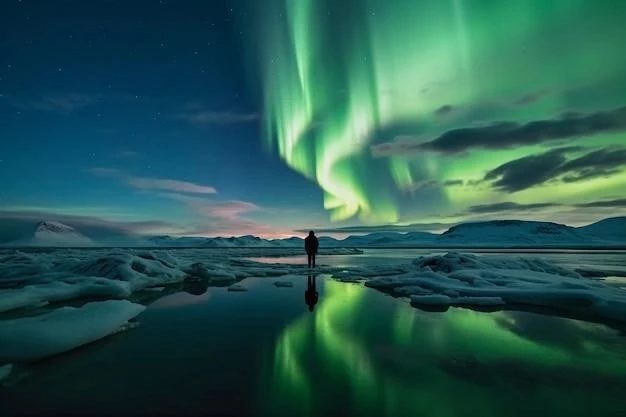
Tromsø, Norway
Tromsø, a captivating city nestled within the embrace of the Arctic Circle in northern Norway, beckons travelers with its unique blend of vibrant urban life and unparalleled access to the mesmerizing spectacle of the Northern Lights. Often referred to as the “Gateway to the Arctic,” Tromsø enjoys a prime location within the auroral oval, guaranteeing frequent and spectacular auroral displays throughout the extended winter months.
From late September to late March, Tromsø basks in the ethereal glow of the aurora borealis, as the city experiences prolonged periods of darkness, creating an ideal canvas for the celestial lights to paint the night sky with their vibrant hues. The city’s strategic location, coupled with its commitment to minimizing light pollution, ensures optimal viewing conditions, allowing visitors to witness the aurora’s full spectrum of colors and intricate patterns in breathtaking clarity.
Tromsø offers a diverse range of aurora viewing options to suit every preference. For those seeking a comfortable and immersive experience, numerous hotels and resorts located just outside the city center provide unobstructed views of the night sky, allowing guests to witness the auroral display from the comfort of their accommodations. Alternatively, guided aurora hunting tours, led by experienced local guides, take visitors to remote locations away from any residual light pollution, maximizing the chances of witnessing a spectacular display. These tours often incorporate traditional Sami elements, such as storytelling and campfire gatherings, providing a deeper cultural understanding of the aurora’s significance.
Beyond its exceptional aurora viewing opportunities, Tromsø offers a wealth of winter activities that perfectly complement the auroral experience. Embark on a thrilling dog sledding or snowmobiling adventure through snow-covered forests, marvel at the towering fjords and snow-capped mountains on a scenic cruise, or visit the Polar Museum to delve into the region’s rich Arctic history and culture.
Tromsø’s unique combination of urban amenities, stunning natural beauty, and unparalleled access to the Northern Lights make it an exceptional destination for travelers seeking an unforgettable Arctic adventure. Whether you dream of witnessing the aurora’s ethereal glow from a cozy cabin or embarking on an exhilarating chase through the Arctic wilderness, Tromsø promises a truly magical experience.
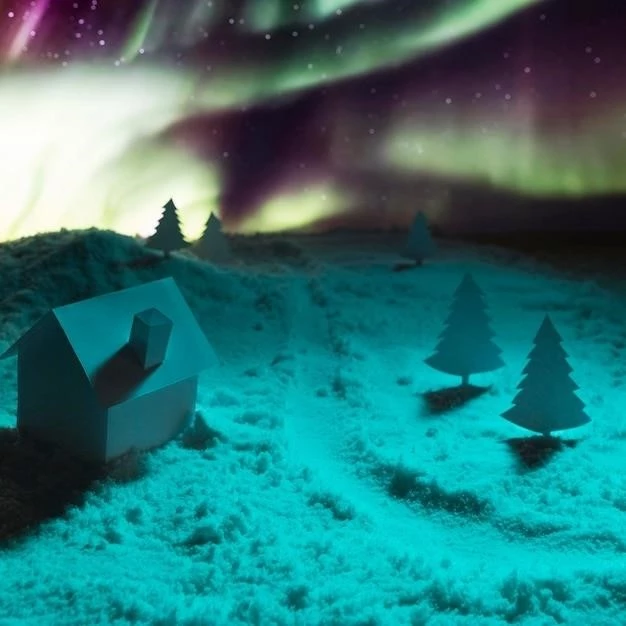
Reykjavik, Iceland
Reykjavik, the vibrant capital of Iceland, offers a captivating blend of urban excitement and natural wonders, making it a unique and accessible destination for witnessing the ethereal beauty of the Northern Lights. While Reykjavik itself boasts city lights, its relatively small size and strategic location within the auroral zone provide surprisingly good chances of catching the aurora even within the city limits, particularly during periods of heightened solar activity.
The aurora season in Reykjavik typically stretches from late August to mid-April, coinciding with the long, dark nights of the Icelandic winter. While the city lights can sometimes obscure fainter auroral displays, venturing just a short distance from the city center to darker locations, such as the Grótta lighthouse or the Öskjuhlíð hill, can dramatically enhance your viewing experience. These easily accessible spots offer respite from light pollution, allowing the aurora’s vibrant hues to dance across the night sky with breathtaking clarity.
Reykjavik’s abundance of guided aurora hunting tours caters to a wide range of preferences and budgets. Experienced tour operators, equipped with real-time aurora forecasts and an intimate knowledge of the surrounding areas, lead excursions to remote locations with optimal viewing conditions, away from any light pollution. These tours often incorporate unique Icelandic experiences, such as visits to geothermal pools or traditional Icelandic dinners, adding an extra layer of magic to your aurora adventure.
Beyond its accessibility to the Northern Lights, Reykjavik serves as an excellent base for exploring Iceland’s otherworldly landscapes. Embark on a day trip to the iconic Golden Circle, home to the Gullfoss waterfall, the Geysir geothermal area, and Þingvellir National Park, a UNESCO World Heritage Site. Discover the rugged beauty of the south coast, with its black sand beaches, towering waterfalls, and majestic glaciers, or venture into the Icelandic highlands for a truly off-the-beaten-path experience.
Reykjavik’s unique combination of urban convenience, natural wonders, and relatively easy access to the Northern Lights makes it an ideal destination for travelers seeking a multifaceted Icelandic adventure. Whether you choose to chase the aurora from remote locations or simply gaze at the night sky from the city center, Reykjavik promises a captivating and unforgettable experience.
Lapland, Finland
Lapland, the enchanting northernmost region of Finland, beckons travelers with its pristine wilderness, captivating culture, and unparalleled opportunities to witness the mesmerizing spectacle of the Northern Lights. Often referred to as the “Land of the Midnight Sun” during the summer months, Lapland transforms into a winter wonderland from September to April, cloaked in darkness and illuminated by the ethereal glow of the aurora borealis.
Lapland’s remote location, far from the encroaching glow of major cities, ensures minimal light pollution, creating ideal conditions for aurora viewing. The vast expanses of snow-covered forests, frozen lakes, and sparsely populated villages provide a pristine canvas for the aurora’s vibrant hues to dance across the night sky. With an average of 200 nights of auroral activity per year, Lapland offers ample opportunities to witness this celestial ballet, especially during the peak season from December to February.
Beyond its prime location and dark skies, Lapland offers a range of unique and unforgettable aurora viewing experiences. Stay in a traditional Finnish kota, a cozy wooden hut with a glass roof, allowing you to gaze at the aurora from the comfort of your bed. Embark on a reindeer or husky-drawn sleigh ride through snow-covered forests, immersing yourself in the silence of the Arctic wilderness while the aurora illuminates the sky above. For a truly magical experience, visit the Arktikum museum in Rovaniemi, Lapland’s capital, to learn about the science and mythology surrounding the Northern Lights.
Lapland’s allure extends beyond aurora viewing. Experience the thrill of snowmobiling through pristine forests, try your hand at ice fishing on a frozen lake, or indulge in the Finnish tradition of sauna and ice swimming. Visit the SnowVillage, a hotel built entirely of ice and snow, or meet Santa Claus himself in the enchanting village of Rovaniemi, the official hometown of Santa Claus.
Lapland offers a magical blend of natural wonders, cultural experiences, and unparalleled opportunities to witness the Northern Lights. Whether you seek adventure, tranquility, or a glimpse of pure magic, Lapland promises an unforgettable journey into the heart of the Arctic winter.
Planning Your Northern Lights Trip
Embarking on a journey to witness the ethereal beauty of the Northern Lights is an experience of a lifetime. To maximize your chances of witnessing this celestial spectacle and ensure a smooth and enjoyable trip, meticulous planning is essential. From selecting the ideal time and location to packing appropriate clothing and researching local customs, a well-structured plan will enhance your aurora adventure.
Timing is Key:
The Northern Lights are most visible during the winter months, from late August to early April, when the nights are longest and darkest. However, the exact timing within this window can impact your viewing experience. Consider factors such as moon phases, as a full moon can diminish the aurora’s visibility. Additionally, researching historical aurora data for your chosen destination can provide insights into the most statistically favorable months for auroral activity.
Location, Location, Location:
Choosing the right location is paramount for successful aurora viewing. Opt for destinations located within the auroral oval, a band of high auroral activity encircling the Earth’s geomagnetic poles. Furthermore, prioritize areas with minimal light pollution, as urban lights can obscure the aurora’s subtle hues. Remote villages, secluded lodges, or designated dark sky preserves offer ideal viewing conditions.
Embrace the Elements:
Venturing into the Arctic or subarctic regions during winter demands meticulous preparation for frigid temperatures and unpredictable weather patterns. Pack layers of warm, waterproof clothing, including thermal underwear, fleece jackets, insulated pants, waterproof outerwear, hats, gloves, and scarves. Additionally, consider packing hand and foot warmers for added comfort during extended aurora viewing sessions.
Research Local Customs:
Respecting local customs and traditions is essential when traveling to any destination, particularly in remote communities with unique cultural heritage. Researching local etiquette, greetings, and dining customs demonstrates cultural sensitivity and fosters positive interactions with local communities. Familiarize yourself with basic phrases in the local language, as this gesture of respect can enhance your overall experience.
By carefully considering these aspects of planning, you can ensure a seamless and unforgettable Northern Lights adventure. Remember to remain flexible, as weather conditions can be unpredictable, and embrace the unexpected beauty of the Arctic or subarctic landscapes.
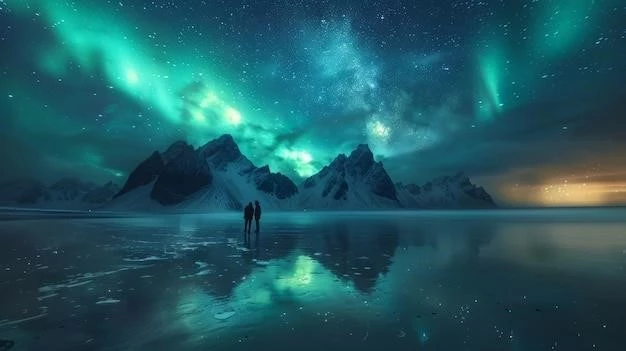
Best Time to Go
Embarking on a quest to witness the ethereal beauty of the Northern Lights requires careful consideration of timing. While the aurora borealis graces the night skies of the northern hemisphere year-round, specific months offer a higher probability of witnessing this celestial spectacle in its full glory. Understanding the interplay of various factors, such as auroral activity, weather patterns, and daylight hours, is paramount for maximizing your chances of a successful aurora hunt.
Peak Season (September ー March):
The optimal period for witnessing the Northern Lights typically spans from late September to early April. During these months, the nights are longest and darkest, providing an ideal canvas for the aurora’s vibrant hues to dance across the sky. Within this peak season, certain months stand out for their particularly favorable conditions.
September & October (Autumn Equinox):
The autumnal equinox, occurring around September 22nd or 23rd, marks a time of increased auroral activity. During this period, the Earth’s magnetic field aligns more directly with the sun’s solar wind, enhancing the chances of witnessing spectacular auroral displays. Moreover, early autumn often brings stable weather conditions to many aurora viewing destinations, with clear skies and comfortable temperatures.
December & January (Winter Solstice):
As the winter solstice approaches, bringing with it the longest nights of the year, the chances of witnessing the Northern Lights remain high. While December and January can bring colder temperatures and occasional snowfall, the extended periods of darkness provide ample opportunities for aurora viewing. Additionally, the festive atmosphere of the holiday season adds a magical touch to the experience.
February & March (Spring Equinox):
Similar to the autumnal equinox, the spring equinox, occurring around March 20th or 21st, often brings a surge in auroral activity. As the days gradually lengthen, the contrast between daylight and darkness can create particularly vibrant auroral displays. Moreover, late winter and early spring often bring milder temperatures and more predictable weather patterns to many aurora viewing destinations.
Remember that aurora viewing is inherently unpredictable, as it relies on the whims of nature. However, by planning your trip during these statistically favorable months, you significantly increase your chances of witnessing the Northern Lights in all their ethereal glory.
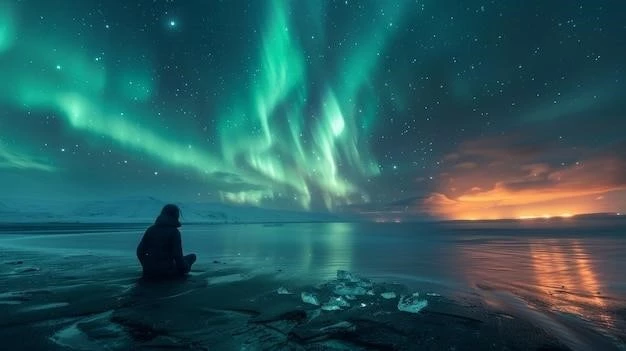
Choosing a Tour
Embarking on a guided Northern Lights tour can greatly enhance your aurora viewing experience, particularly for first-time chasers or those seeking local expertise and logistical support. With a plethora of tour operators offering a diverse range of options, selecting the ideal tour tailored to your preferences and budget requires careful consideration.
Research and Compare:
Begin by conducting thorough research online and consulting travel forums or review websites to identify reputable tour operators specializing in Northern Lights excursions. Compare factors such as tour duration, group size, included activities, transportation methods, and, most importantly, customer reviews. Look for operators with a proven track record of success, experienced guides, and a commitment to sustainable tourism practices.
Group Size and Atmosphere:
Consider the group size and overall atmosphere you prefer for your aurora adventure. Smaller, intimate groups often provide a more personalized experience, allowing for greater interaction with the guide and fellow travelers. Conversely, larger groups can offer a more social and festive ambiance. Determine your comfort level with group dynamics and select a tour accordingly.
Transportation and Logistics:
Evaluate the transportation methods and logistical arrangements provided by different tour operators. Some tours utilize comfortable, heated buses or vans, while others offer more adventurous options such as snowmobiling or dog sledding excursions. Consider your comfort level with various modes of transportation, particularly in cold weather conditions, and choose a tour that aligns with your preferences.
Inclusions and Add-ons:
Carefully review the inclusions and optional add-ons offered by each tour operator. Some tours provide essential gear, such as thermal overalls and tripods, while others offer additional activities like ice fishing, snowshoeing, or visits to local cultural sites. Determine which inclusions are essential for your enjoyment and budget accordingly.
Flexibility and Backup Plans:
Aurora viewing is inherently unpredictable, as it relies on clear skies and auroral activity. Choose a tour operator that offers flexibility in terms of rescheduling or alternative activities in case of unfavorable weather conditions. Reputable operators often have backup plans in place to ensure guests have a memorable experience, even if the aurora proves elusive.
By carefully considering these factors and selecting a reputable tour operator, you can elevate your Northern Lights adventure and increase your chances of witnessing this celestial spectacle in all its glory.










